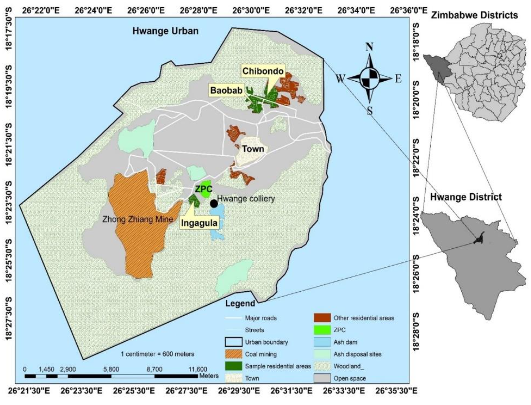Energy literacy among young adults in the European countries
Abstract
Energy literacy is an essential prerequisite for informed and sustainable energy consumption habits. Our paper focuses on factors influencing young adults’ attitudes and behaviours and their knowledge of sustainable energy consumption practices. The research was conducted in five European countries, Austria, Croatia, Greece, Slovenia and Poland, and data were collected from 219 young adults between the ages of twenty-nine and thirty-nine. The methods used are statistical analyses, including principal component analysis, a technique for analysing large data sets and identifying influencing factors. We used a statistical software package (SPSS) for the analyses. Our analysis revealed five significant factors influencing the energy literacy of young adults. The key factors were education and awareness, investment in energy efficiency, age and gender, climate change and environmental protection, sustainable lifestyle and social environment. Policymakers, educators and other stakeholders can work towards creating a more energy-literate and sustainable society by understanding the key factors that influence energy literacy.
References
[1]IEA. Net Zero Roadmap: A Global Pathway to Keep the 1.5 ℃ Goal in Reach. IEA: Paris. 2023.
[2]Cattaneo C. Internal and external barriers to energy efficiency: which role for policy interventions? Energy Efficiency. 2019; 12(5): 1293-1311. doi: 10.1007/s12053-019-09775-1
[3]Eurostat. Energy consumption in households. 2022. Available online: https://ec.europa.eu/eurostat/statistics-explained/index.php?title=Energy_consumption_in_households (accessed on 9 December 2023).
[4]Appiah MK, Gyening EK, Teye PK, et al. The implications of energy literacy on energy savings behavior: A model of contingent effects of energy value and attitude. Energy Reports. 2023; 10: 72-85. doi: 10.1016/j.egyr.2023.06.008
[5]Dominitz S, Parush A, Metcalfe D. Domestic electricity consumers and the interactive bill: design intervention for improved energy literacy and empowerment. Energy Research & Social Science. 2023; 103: 103209. doi: 10.1016/j.erss.2023.103209
[6]Venghaus S, Henseleit M, Belka M. The impact of climate change awareness on behavioral changes in Germany: changing minds or changing behavior? Energy, Sustainability and Society. 2022; 12(1). doi: 10.1186/s13705-022-00334-8
[7]Martins A, Madaleno M, Ferreira Dias M. Are the energy literacy, financial knowledge, and education level faces of the same coin? Energy Reports. 2022; 8: 172-178. doi: 10.1016/j.egyr.2022.01.082
[8]Ojala, M. Regulating worry, promoting hope: How do children, adolescents, and young adults cope with climate change? International Journal of Environmental and Science Education, 2012; 7(4): 537-561.
[9]DeWaters JE, Powers SE. Energy literacy of secondary students in New York State (USA): A measure of knowledge, affect, and behavior. Energy Policy. 2011; 39(3): 1699-1710. doi: 10.1016/j.enpol.2010.12.049
[10]Sovacool BK, Blyth PL. Energy and environmental attitudes in the green state of Denmark: Implications for energy democracy, low carbon transitions, and energy literacy. Environmental Science & Policy. 2015; 54: 304-315. doi: 10.1016/j.envsci.2015.07.011
[11]Sayarkhalaj H, Khesal MF. Investigating energy literacy and its structural model for citizens of Mashhad. Heliyon. 2022; 8(11): e11449. doi: 10.1016/j.heliyon.2022.e11449
[12]Cotton DRE, Zhai J, Miller W, et al. Reducing energy demand in China and the United Kingdom: The importance of energy literacy. Journal of Cleaner Production. 2021; 278: 123876. doi: 10.1016/j.jclepro.2020.123876
[13]Martins A, Madaleno M, Dias MF. Energy literacy assessment among Portuguese university members: Knowledge, attitude, and behavior. Energy Reports. 2020; 6: 243-249. doi: 10.1016/j.egyr.2020.11.117
[14]Lee LS, Lee YF, Altschuld JW, et al. Energy literacy: Evaluating knowledge, affect, and behavior of students in Taiwan. Energy Policy. 2015; 76: 98-106. doi: 10.1016/j.enpol.2014.11.012
[15]Blasch J, Boogen N, Filippini M, et al. Explaining electricity demand and the role of energy and investment literacy on end-use efficiency of Swiss households. Energy Economics. 2017; 68: 89-102. doi: 10.1016/j.eneco.2017.12.004
[16]DeWaters J, Powers S. Establishing Measurement Criteria for an Energy Literacy Questionnaire. The Journal of Environmental Education. 2013; 44(1): 38-55. doi: 10.1080/00958964.2012.711378
[17]Martins A, Madaleno M, Dias MF. Energy literacy: What is out there to know? Energy Reports. 2020; 6: 454-459. doi: 10.1016/j.egyr.2019.09.007
[18]Gołębiowska, B. Energy literacy in Poland. Economics and Environment. 2020; 73(2): 23.
[19]Chen KL, Huang SH, Liu SY. Devising a framework for energy education in Taiwan using the analytic hierarchy process. Energy Policy. 2013; 55: 396-403. doi: 10.1016/j.enpol.2012.12.025
[20]Brent DA, Ward MB. Energy efficiency and financial literacy. Journal of Environmental Economics and Management. 2018; 90: 181-216. doi: 10.1016/j.jeem.2018.05.004
[21]Ramos A, Labandeira X, LLschel A. Pro-Environmental Households and Energy Efficiency in Spain. SSRN Electronic Journal. 2015. doi: 10.2139/ssrn.2625560
[22]Kahn ME. Do greens drive Hummers or hybrids? Environmental ideology as a determinant of consumer choice. Journal of Environmental Economics and Management. 2007; 54(2): 129-145. doi: 10.1016/j.jeem.2007.05.001
[23]Lee YF, Nguyen HBN, Sung HT. Energy literacy of high school students in Vietnam and determinants of their energy-saving behavior. Environmental Education Research. 2022; 28(6): 907-924. doi: 10.1080/13504622.2022.2034752
[24]Keller L, Riede M, Link S, et al. Can Education Save Money, Energy, and the Climate? —Assessing the Potential Impacts of Climate Change Education on Energy Literacy and Energy Consumption in the Light of the EU Energy Efficiency Directive and the Austrian Energy Efficiency Act. Energies. 2022; 15(3): 1118. doi: 10.3390/en15031118
[25]Białynicki-Birula P, Makieła K, Mamica Ł. Energy Literacy and Its Determinants among Students within the Context of Public Intervention in Poland. Energies. 2022; 15(15): 5368. doi: 10.3390/en15155368
[26]Alia AS, Mariah A, Hasnan H, et al. Cultivate the energy literacy in Malaysian university. International Conference of Mathematics and Mathematics Education (I-Cmme) 2021. 2022; 2566: 080001. doi: 10.1063/5.0110029
[27]Ramachandran A, Ellis N, Gladwin D. Energy literacy: A review in education. The Journal of Environmental Education. 2023; 55(3): 191-202. doi: 10.1080/00958964.2023.2283694
[28]Papavasileiou V, Poimenidis D, Ioannidou G. Knowledge and Practices on The Subject of Energy Conservation as Part of Primary School 6th Graders’ Energy Literacy Ijaedu. International E-Journal of Advances in Education. 2022; 7-12. doi: 10.18768/ijaedu.1068750
[29]Martins AM, Madaleno M, Dias MF. Women vs Men: Who performs better on Energy Literacy? International Journal of Sustainable Energy Planning and Management, 2021; 32: 37-46.
[30]Cerović L, Malnar A, Sinčić D. Energy Literacy of Economics Students in Rijeka: Knowledge, Attitudes, and Behavioral Approach. Energies. 2024; 17(8): 1840. doi: 10.3390/en17081840
[31]Bose M, Modi A. Advances in Energy Research. Springer Singapore; 2021.
[32]Košmelj K. Principal components method: basics and an example (Slovenian). Acta agriculturae Slovenica. 2007; 89(1). doi: 10.14720/aas.2007.89.1.15019
[33]Rebernik D. Using factor analysis to study the social differentiation of urban space (Slovenian). Zveza geografskih društev Slovenije. 2013.
Copyright (c) 2024 Darko Kovačič, Ana Ulbin, Andreja Abina, Aleksander Zidanšek, Damjan Krajnc

This work is licensed under a Creative Commons Attribution 4.0 International License.
Authors contributing to this journal agree to publish their articles under the Creative Commons Attribution 4.0 International License, allowing third parties to share their work (copy, distribute, transmit) and to adapt it for any purpose, even commercially, under the condition that the authors are given credit. With this license, authors hold the copyright.










